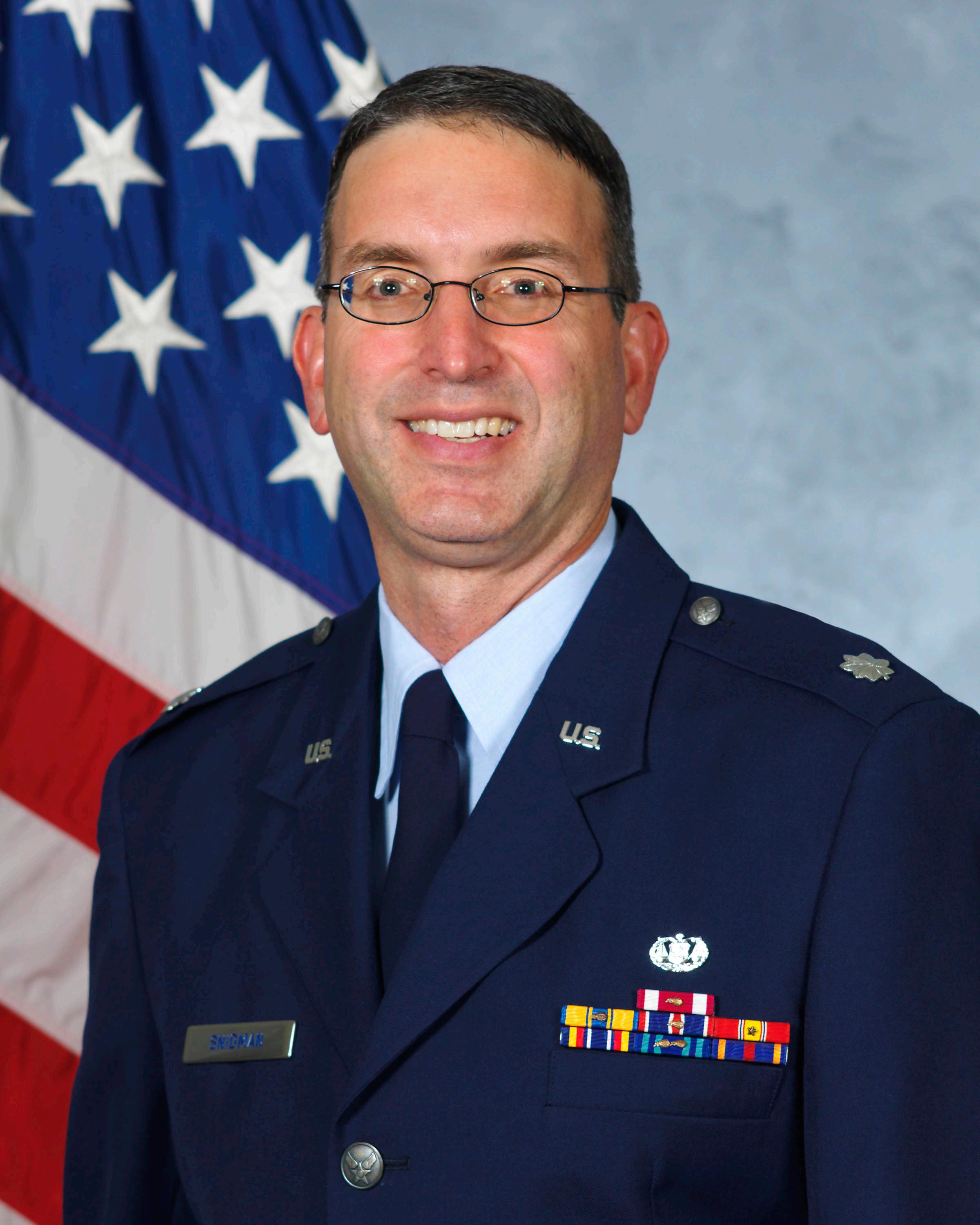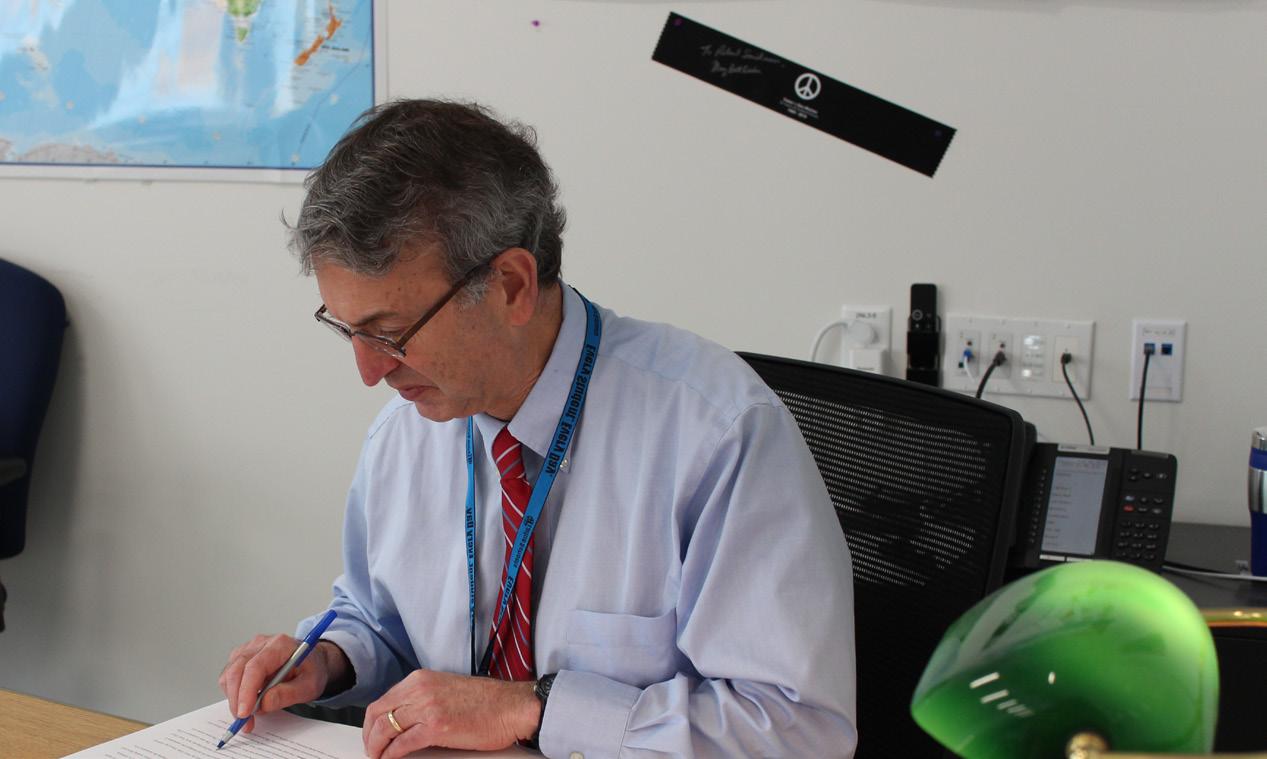
8 minute read
9. Robert
the man, the myth, the man, the myth,
AP US Government and politics teacher Robert Snidman shares how he got to this point in his career
Advertisement
SYDNEY CRUMP managing editor
the snidman the snidman


LADUEPUBLICATIONS.COM FEATURES 9 F or most students, having Robert Snidman as their teacher is an iconic part of the AP U.S. Government class. Most of his students also know that before becoming a teacher, Snidman had a variety of careers, like joining the U.S. Air Force and working as a lawyer. Snidman’s different jobs have added to his knowledge of the government and how it operates.
As a 13-year-old boy, Snidman got his first job as a paperboy delivering Newsweek and Time magazines. He gained an interest in current events from his time as a paperboy. Snidman grew up in Los Angeles and attended the University of California, Los Angeles, where he worked jobs like escorting students to their dorms at night and running an ambulance for athletes at the 1984 Summer Olympics in Los Angeles.
“In 1984, the Olympics came to [Los Angeles] and [University of California, Los Angeles] was turned into an Olympic Village because they had dorms, and they had workout fields,” Snidman said. “I got to work in the Olympic Village because we had a little clinic there.”
Snidman also spent a whole summer on a kibbutz, a collective community focused on agriculture, in Israel picking bananas for about $1 per week – though his housing and food were provided by the kibbutz. Snidman estimates that he picked over a ton of bananas during that summer.
“I had a machete, and I would chop [the bananas] off the tree and then haul them to the truck,” Snidman said.
After graduating from law school, Snidman decided to join the U.S. Air Force and work at Yokota Air Base in Japan doing work in criminal law, environmental law and domestic relations. From there, Snidman’s wife Elizabeth Snidman, a Ladue graduate whom he met while on active duty at Scott Air Force Base, thought it was time to return to St. Louis and settle down. Snidman eventually worked at the Juvenile Public Defender’s office in the city of St. Louis.
“I was there [for] two years at the Youth Advocacy unit of the Missouri State Public Defender’s office, and it was a wonderful crew who worked there,” Snidman said. “After that I got interested in teaching because I worked with teachers in the city.”
Though junior Anna Reis, one of Snidman’s students, enjoys learning about government and politics, her favorite part of AP U.S. Government is all the jokes and stories Snidman tells every day. Reis thinks his jokes lighten up some of the topics she finds boring.
“I think my favorite experience with him, in general, is just all the jokes he makes and his attempts to use what we call hip language — today he said ‘salty,’” Reis said.
Snidman’s first teaching job was at Hazelwood Central High School, where he started their AP U.S. Government program. Social studies teacher Christopher Saxton sat in on Snidman’s interview for a teaching position at Ladue 15 years ago. At the start of Snidman’s career as a teacher at Ladue, Saxton was his mentor. He believes Snidman has grown into a wonderful teacher. The two have worked together on Ladue’s Mock Trial team for many years. Saxton coined the nickname “Matlock” for Snidman, citing that he looked like the fictional criminal defense attorney.
“One of my favorite stories about Mr. Snidman is that kids call him ‘The G.O.A.T.,’” Saxton said. “And he didn’t know what ‘G.O.A.T.’ was, and he got very upset, but then we told him what ‘G.O.A.T.’ was — the greatest of all time — and he became very happy.”
During Snidman’s time as a lawyer, he had to clearly explain situations to commanders, and he finds that it helped him explain material to students. His many careers before teaching contribute to the classroom experience he is able to provide for students.
“The great thing [at Ladue] is [that] every year is different kids and different things going on in politics, so [teaching] never gets old,” Snidman said. ABOVE: Robert Snidman works at his desk during a prep period. He has taught at the high school as a social studies teacher for 15 years. “You’ll find at many high schools, there are lawyers teaching there because it is so related to being a lawyer,” Snidman said. (Photo by Sunny Lu) FAR LEFT: Snidman poses for his last official U.S. Air Force headshot. (Photo courtesy of Robert Snidman) BELOW: Snidman holds a shadow box containing his medals and ribbons from the U.S. Air Force at his retirement ceremony January 2016. Snidman was a reservist at Scott Air Force Base from 1999-2016. “In my last four years [at Scott Air Force Base], I was the Staff Judge Advocate, which is the top lawyer for the unit,” Snidman said. (Photo courtesy of Robert Snidman)

ABOVE: Kyle Gyawali quickly solves his cube with ease. He has spent much of his time practicing his skills. “At some point I hope to go to the U.S. National Championships,” Gyawali said. RIGHT: Kyle Gyawali demonstrates how he cubes. He has competed in several cubing competitions. “I really enjoy solving this puzzle and trying to go faster,” Gyawali said. (Photos by Nicole Kalishman)



Junior Kyle Gyawali masters skills on Rubik’s Cube


10 03.11.20 SPREAD DESIGN BY E. TURKIELTAUB; B. SIWAK MAX EASTMAN staff writer W alking into the Student Union at Illinois University at Urbana-Champaign, junior Kyle Gyawali feverishly scrambles and unscrambles his three-by-three Rubik’s cube. Kyle’s immense speed and precision leaves many of the people in the auditorium stunned. After finding his way to the checkin table, he takes a seat in the stands and continues his elegant display of both mental and physical nimbleness. Following the inspection of the cube, his time starts, and he loses himself – even if only for mere seconds – inside the intricacies of the cube.
Kyle Gyawali is a cuber who competes in many events and has been doing so for almost three years. There are several different events available for Kyle to compete in. A skewb is similar to the Rubik’s Cube as it has a cubical shape but differs in the movement of the axes, which pass through the corners of the cube.
“I compete in two-by-two, three-by-three, four-byfour, five-by-five, six-by-six, seven-by-seven, three-bythree one-handed, three-by-three blindfolded, skewb, pyraminx, square one, megaminx and Rubik’s Clock,” Kyle said.
Along with being multi-faceted, he performs very well in many of his events. Kyle achieves his goals with practice day in and day out.
“In three-by-three one-handed, I am first in the state of Missouri for average [time],” Kyle said. “For normal Rubik’s Cube, I am third, and for two-by-two, I am second, along with skewb.”
Becoming a nationally ranked cuber did not come easily. He spends many hours practicing, even in school.
“It’s usually all he does during homelab,” English teacher Kimberly Gutchewsky said. “So that’s how he spends his 20 minutes every homelab.”
As a nationally ranked cuber, there are many aspects of cubing that affect his life outside of competition. Kyle strives to share his knowledge of the activity with other people.
“He has tried to teach me once or twice for the twoby-two event because the three-by-three event would be too hard,” Millie Gyawali, Kyle’s sister, said. “I like that because it’s really nice that he wants me to be able to do it.”
Another aspect of cubing is the massive cubing community that is present at almost every major competition. There is a feeling of unity when old friends from past competitions reunite.
“By the end of my first competition, I had a whole group of friends who live in Kansas City,” Kyle said. “After my second one, I had friends from St. Louis and some from Wisconsin and Ohio – just all over the place.”
There are many different reasons for why people begin to cube, but oddly, it seems like there are very few for why they stay: either they are in love with the puzzles, or they are in love with the community. For Kyle, the latter is true.
“Everyone there is super nice and accepting,” Kyle said. “You can average 45 seconds on three-by-three, and you can still have a really in-depth, friendly conversation with someone who averages nine seconds or eight seconds.”



Want to make the Varsity tennis team or play college tennis?
Come check out Miller Tennis Academy located at Forest Lake Tennis Club! Learn to play tennis from the coaches that have produced over 50 high school State Champions.

Contact Miller Tennis Academy Mike Miller 314-341-8945 mm63141@aol.com
Contact Crane at Forest Lake Tennis Club 314-878-2722 info@forestlaketennis.com www.forestlaketennisclub.com






